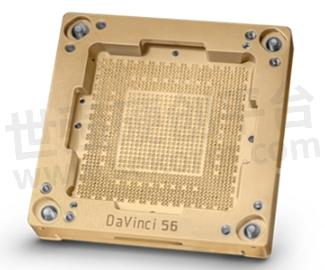Is It Really that Hard to Improve Chip Test Performance?

In the digital era, semiconductor chips are present in almost every aspect of our lives. Whether it is from microwave ovens to computers, cell phones, computer central processing units, and other electronic devices there are a variety of chips installed.
Contemporary microprocessors or graphics processors can hold more than 50 billion transistors on them, with a failure rate of just shy of one in a billion. To achieve such levels of reliability in chip operation, testing, and measurement play a critical role in the overall chip design and package testing process. Smiths Interconnect is here to discuss the impact of semiconductor test sockets on the semiconductor chip test and measurement process for different applications.
The Role of Testing
What role does the chip play in these devices? The role of various chips on top of these electronic devices is more similar to the role played by various organs of the human body. The overall management of electronic devices and computing logic processing, etc., need the CPU (the core component is the chipset), the CPU is equivalent to the human brain. Electronic devices to identify sound, and process audio, need an audio processing chip, equivalent to the human body's ears. Electronic devices receive images and process pictures, requiring a picture processing chip, which is equivalent to the human body's glasses. In short, these devices have various functions that require corresponding chips to achieve, just like the human body's various organs to achieve different functions.

Testing during production plays an important role in ensuring reliability and repeatability. Semiconductor manufacturing plants perform tests at each stage of production to eliminate defective parts as early as possible, while precisely controlling each process parameter of the chip. The factory first performs basic functional testing of the semiconductor chip core at the wafer level, discarding any faulty parts, and then separates the tested chips into individual units and packages them for further testing. Usually, the chip is tested up to 20 times before it leaves the factory. Most testing is done by special equipment attached to the chip, which uses electrical signals to stimulate the chip to simulate the real state and capture the response of the chip to see if it meets the design requirements. These are known as automatic test equipment (ATE) systems typically sell for $1 million to $2 million and can be programmed to test a variety of chips for many years.
Semiconductor Test Solutions
Smiths Interconnect offers high-quality test sockets with a wide variety of spring contacts designed using different design standards. The products are flexible, design-optimized, and quick to deliver. Test sockets are available in a variety of leaded and leadless package types, including leadless (QFN) packages, quad flat packages (QFP), small outline integrated circuits (SOIC), ball grid array (BGA) packages, and connection tray grid array (LGA) packages.
The DaVinci Series test socket is a high-performance coaxial socket that precisely tackles the 56/112G SerDes PAM4 test challenge. Consumer demand for next-generation technologies such as the Internet of Things, 5G, artificial intelligence (AI), deep learning and self-driving vehicles require high-speed data transmission and processing technologies, and high-reliability testing is critical for the high-speed, multifunctional digital and analog devices that drive them.
Array High-Speed Test - DaVinci Series
In a wide range of high-speed applications, DaVinci series high-speed test sockets are the ideal high-speed solution for testing large network switching core chips introduced for 5G and cloud computing. DaVinci high-speed application sockets IC sockets integrate spring probe technology and patented insulation materials to provide excellent signal integrity and high mechanical durability. The socket provides an impedance-controlled coaxial solution with analog RF up to 67 GHz and digital transmission speeds of 112Gb/s. The use of spring probe technology in a patented insulating material housing results in a coaxial structure that reduces test height and material deflection.

In addition, the reduced test height and low material deflection characteristics of the new DaVinci High-Speed Series ensure efficiency and accuracy in the final test phase of intelligent network visualization technologies, 5G, and artificial intelligence applications. The new DaVinci Series also features a fully shielded signal path, a socket frame that acts as a heat sink for excellent thermal performance, and interchangeable spring-loaded probe contacts. It is rated at 3.0A and has a low contact resistance (<80mΩ).

With the current upgrade of high-speed communication standards such as 5G, designers of chip ICs for consumer electronics, smart driving, and power management are increasingly using QFN packages in applications where both stringent electrical performance requirements and the smallest possible chip form factor and footprint are required. With their directly connected peripheral pad structure, large ground blocks for thermal and electrical performance, and very thin stack heights, QFN packages offer unparalleled advantages but also present a new set of test challenges. Addressing these test challenges requires a stable, reliable, and electrically "clean" test socket solution.
- +1 Like
- Add to Favorites
Recommend
- Smiths Interconnect’s DaVinci 112 High-Speed Test Socket Wins Best Test Measurement Award at the 2024 Global Electronics Achievement Awards
- Smiths Interconnect‘s DaVinci 112 Test Socket Shortlisted for 2024 World Electronics Achievement Awards
- Smiths Interconnect expands DaVinci test socket offering which is designed for high-speed testing of 0.35mm minimum pitches
- Smiths Interconnect Introducing the Next Generation of High-speed Test Solutions ——DaVinci 112
- Smiths Interconnect Announced DaVinci 56 Test Socket for Reliable Testing up to 67GHz Analog RF / 56Gbps NRZ Digital
- Smiths Interconnect Offered Isolators to Support NASA’s Europa Clipper Mission to Explore Jupiter’s Moon
- Smiths Interconnect Acquires Reflex Photonics to Expand in High Speed Data Transmission Market
- How Smiths Interconnect Keeps The Medical World Connected
This document is provided by Sekorm Platform for VIP exclusive service. The copyright is owned by Sekorm. Without authorization, any medias, websites or individual are not allowed to reprint. When authorizing the reprint, the link of www.sekorm.com must be indicated.






























































































































































































































































































































































































































































































































































































































































































































































































































































































